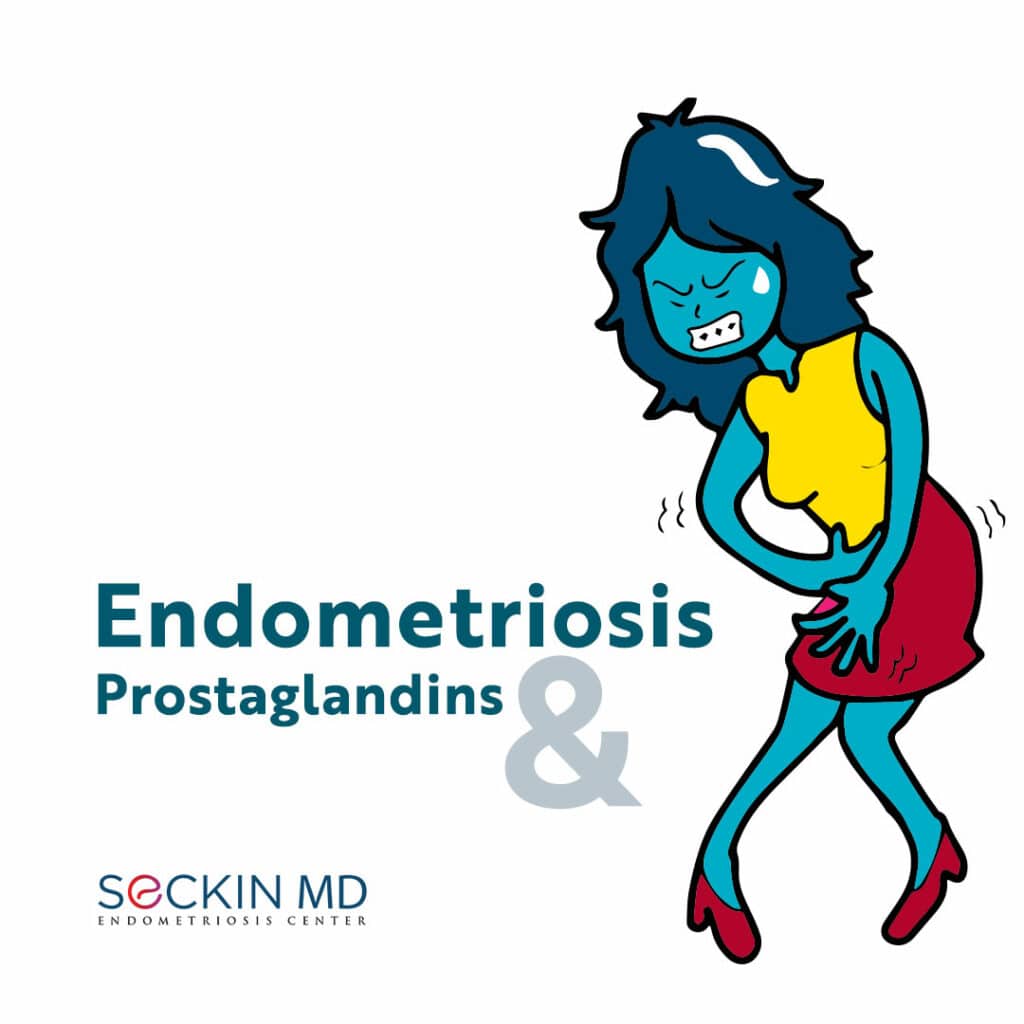Endometriosis and Prostaglandins

Prostaglandins are hormone-like substances that the body makes at sites of infection or tissue damage. They play a role in defense and repair. Prostaglandins also have other functions such as causing uterine contractions during periods and during labor. The release of prostaglandins can trigger pain and inflammatory responses in patients with endometriosis.
What is the link between endometriosis and prostaglandins?
Chronic pelvic pain is one of the hallmark symptoms of endometriosis. Women with endometriosis produce an excess of PGE2, as well as COX2, which is an upstream enzyme responsible for the conversion of prostaglandins into their active form, PGE1, and PGE2. These play a role in uterine contractions, pain, and inflammation.
PGE1 counters the inflammatory activities of PGE2 and a balance of these two is necessary for health. Thus, excess production of PGE2 can be problematic.
Endometriosis is an estrogen-dependent disease. Studies have shown that endometriosis lesions themselves can produce excess PGE2, which can stimulate an increase in estrogen.
The presence of endometriosis lesions can trigger inflammation, which further promotes PGE2 activity. PGE2 also inhibits apoptosis or programmed cell death, which makes endometriosis lesions virtually immortal.
What does the research say?
A 2015 study in 78 endometriosis patients found that disease severity and nature of symptoms depend on the subtype of PGE2 receptors on cells. The study also showed that prostaglandin transporter proteins can also regulate PGE2 activity. The researchers found that there is a difference in how ectopic and eutopic endometriosis lesions express PGE2 receptors and transport proteins. (In eutopic endometriosis lesions are present in the pelvic regions such as the fallopian tubes and ovaries while in ectopic endometriosis, they enter the peritoneal cavity and other distant sites).
Why are painkillers or NSAIDs alone not ideal for managing endometriosis pain?
Doctors often prescribe non-steroidal anti-inflammatory drugs (NSAIDs) such as ibuprofen, naproxen sodium, and mefenamic acid as a quick way to alleviate endometriosis pain. These work by blocking the COX enzyme, thus the production of prostaglandins that lead to pain. Their intake must be timed carefully as they cannot reduce pain due to already-released prostaglandins. NSAIDs can also affect some of the “good prostaglandins” and cause adverse effects such as vomiting or even stomach ulcers. Therefore, long-term NSAID use is not always feasible.
The gold standard for endometriosis treatment is laparoscopic deep excision surgery to fully excise all endometriosis lesions. This can reduce excess PGE2 production in those localized sites of inflammation. Ectopic endometriosis lesions can also trigger PGE2 production and inflammatory responses. So, a thorough examination of areas other than the uterine/pelvic cavity is a must.
Did you know about the link between prostaglandins and endometriosis? Please share your thoughts by leaving a comment on our post on Facebook or Instagram.
Get a Second Opinion
Our endometriosis specialists are dedicated to providing patients with expert care. Whether you have been diagnosed or are looking to find a doctor, they are ready to help.Our office is located on 872 Fifth Avenue New York, NY 10065.
You may call us at (646) 960-3080 or have your case reviewed by clicking here.